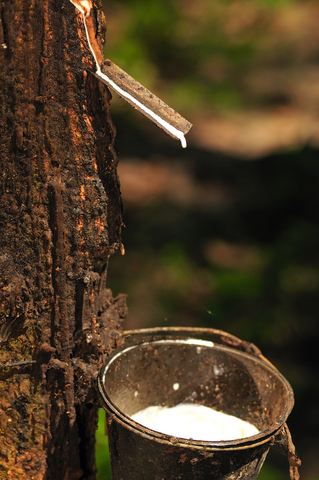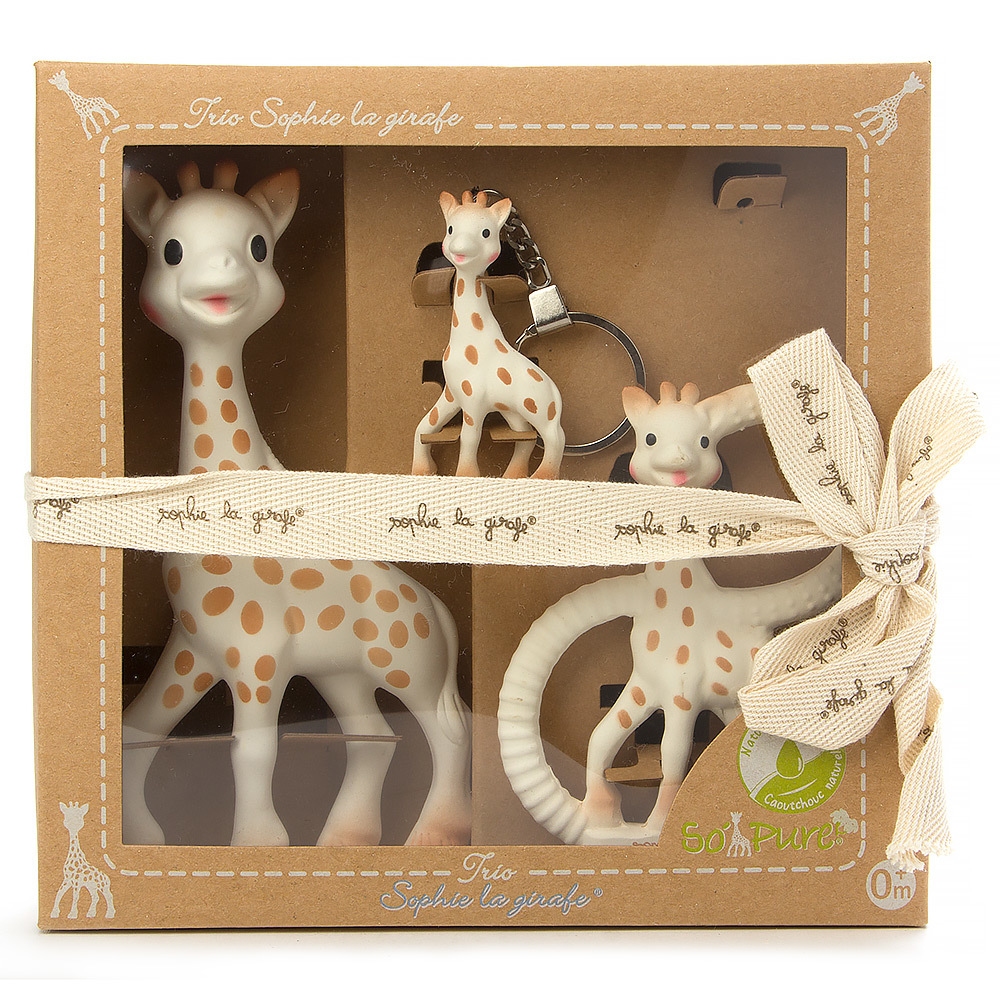
Have you noticed more attention given to natural rubber products recently? From yoga mats to natural baby toys, what’s new about it? Natural rubber is the new (natural) substitute for the old (unfortunately toxic) substitute. From rubber to plastic and back.
Plastic Like Rubber
Though there were some plastic toys created before World War II, it wasn’t until after the war that chemists looked for softer substitutes for natural rubber. That process gave us in 1949 the silicone substitute for rubber that we still know as Silly Putty. Unfortunately, some of the plastics, including those in teething toys, turned out to be toxic.
With so many questions about the safety of plastics, including the banning in the U.S. of some plastic softeners (phthalates), I wonder what other toxins might be lurking in plastic toys. What don’t we know yet? What will we be sorry about in 10 or 20 years?
To avoid the issues of child toy safety, many parents are turning back to the original: natural rubber toys. Not only are parents turning to natural rubber toys, they are turning back to the classic, original toys like the Natural Rubber Duck, still created in Spain by a third-generation family business, and Sophie the Giraffe, still handmade in the French Alps and creeping up on her 50th birthday.
Rubber Already Like, Well, Rubber
The natural source of rubber is the rubber (Hevea) tree, most often from Asia. Rubber can be sustainably harvested, as the tree is tapped for its sap or milk.
Liquid latex (the milk of the rubber tree) coagulates into rubber very quickly unless an alkaline is added. When ready, acid (like vinegar) is added to finish the coagulation process. The natural coagulation is all of the processing necessary to create the natural rubber used to make toys. To make a tougher rubber for applications like tires, the material is then vulcanized. Even engineered rubber seems to be fairly benign. But, toy rubber doesn’t go that far in the process.
Rubber is the material soft plastics attempt to emulate. It takes a lot of plasticizers (softeners like phthalates) to make plastic behave like rubber.
Benefits of Natural Rubber Toys
I look to natural toys because I want to make environmentally and socially sustainable choices for my children. Most important, though, I want toys that won’t harm my children with the unintended consequences of chemical exposure, especially when chewed and sucked on.
Natural rubber toys are:
- Non-toxic
- Naturally soft
- Breathable
- Renewable material
- Low-impact and sustainably harvested
- Biodegradable
- Phthalate free
- PVC (polyvinyl chloride) free
- Petroleum free
- Heavy metal free
Because natural rubber is minimally processed, it can be heat sensitive. Use sensible treatment, like not leaving it in the direct sunlight, boiling it, or washing it with chemical cleaners. Simple water—or water and vinegar or lemon—will clean natural rubber toys very well.
Sophie the Celebrity Giraffe

Everywhere I look I see Sophie the Giraffe. I see Sophie gripped tightly by babies (every other baby at ABC Kids seemed to have one), and I keep seeing articles about how Sophie is the most popular toy in Hollywood. If the definition of celebrity is famous for being famous, this certainly describes Sophie. For a toy approaching her 50th birthday, she sure does seem new again.
That is a lot of nubby-headed, chewable giraffes. Over 600,000 Sophie the Giraffes are sold in Europe alone each year. I wonder how many are sold in Hollywood?
I have seen some well-worn giraffes, too. Sophie can lose her spots to a vigorous chewer. So, parents will also be happy to know that Sophie’s spots are made with food-grade paint.
I suspect that the catchy name and the compelling story help boost Sophie the Giraffe’s popularity, but I find myself most intrigued by the fact that this natural rubber toy is still handmade.
Other Natural Rubber Products for Families
Another common household product that requires the kind of stability and softness natural rubber provides is bedding. Rubber is often used as a core for natural mattresses and pillows.
Tres Tria natural pregnancy and co-sleeping pillow is a great example of learning from modern innovations in shape and size of typical sleeping foam products then translating them back into a natural product that is not only functionally superior, holding its shape over time, but environmentally sustainable (certified Natural Latex Rubber and certified Organic cotton cover) and fair trade.
As with so many choices, we can back up to previous choices and ask what we learned from the innovations that displaced natural choices and how we can make the natural choices the best choices. Give your baby and child a durable, non-toxic natural rubber toy.

Wow! What a lot of great information about natural rubber. I knew there was a reason Sophie the Giraffe was one of my girls favourite toys. In fact, we had to have two – one for each girl. If one saw the other playing with ‘her’ Sophie there were always tears unless we had a second on hand quickly. Great post Lori!
How do you tell them apart? Or doesn’t it matter as long as each has her giraffe?
You can dip a giraffe foot in beet juice to distinguish one from the other.
susie 😉